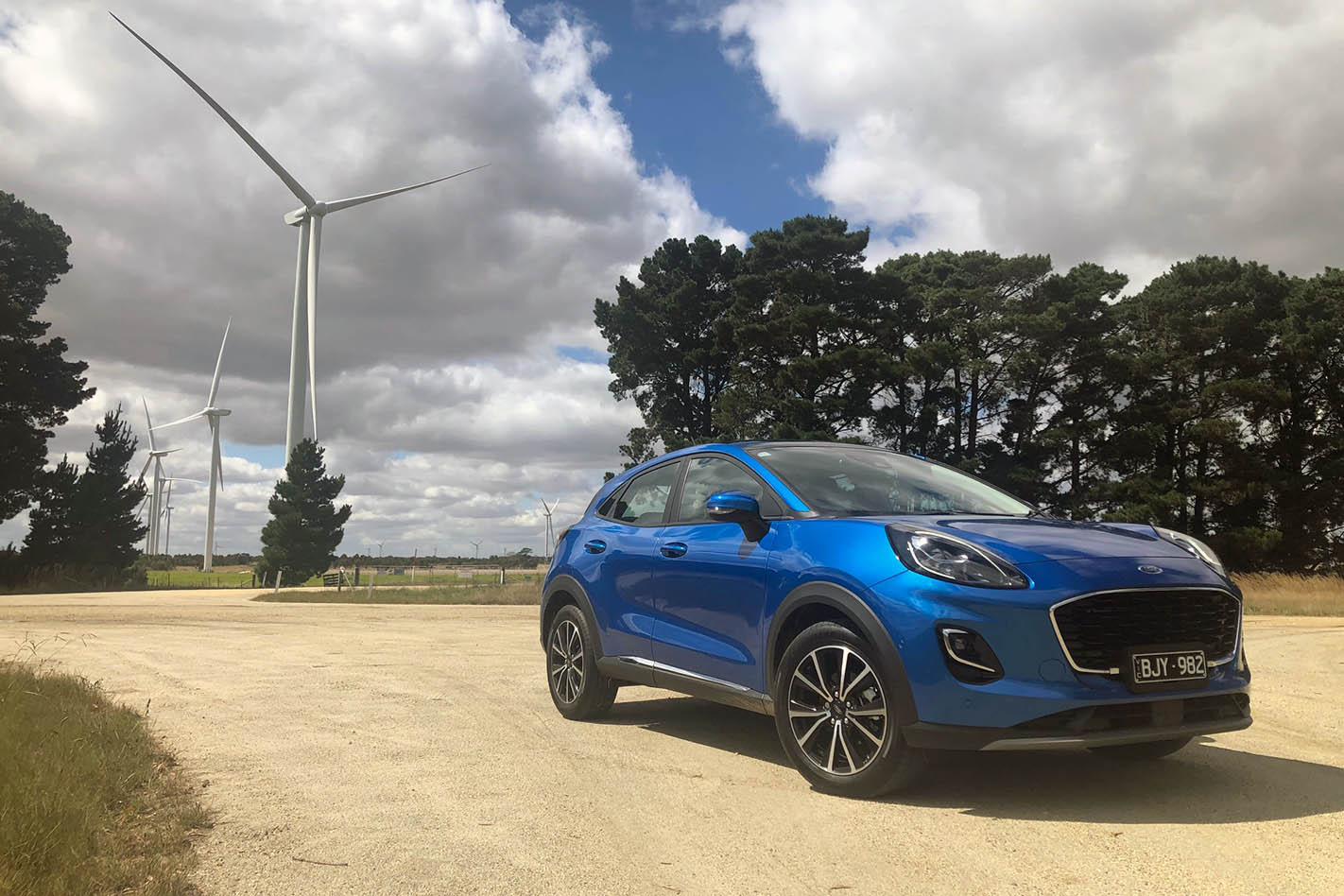
What is the Ford Puma 1.0L Petrol?
Based on the Ford Fiesta hatchback, the European designed and built Puma light SUV replaces the rather bland EcoSport at the smaller end of Ford Australia’s SUV line-up and couldn’t be more different in terms of bold styling, driveability and safety technology, which makes a formidable rival against the likes of the Mazda CX-3, Renault Captur, Nissan Juke, Toyota Yaris Cross, Kia Stonic and Volkswagen T-Cross
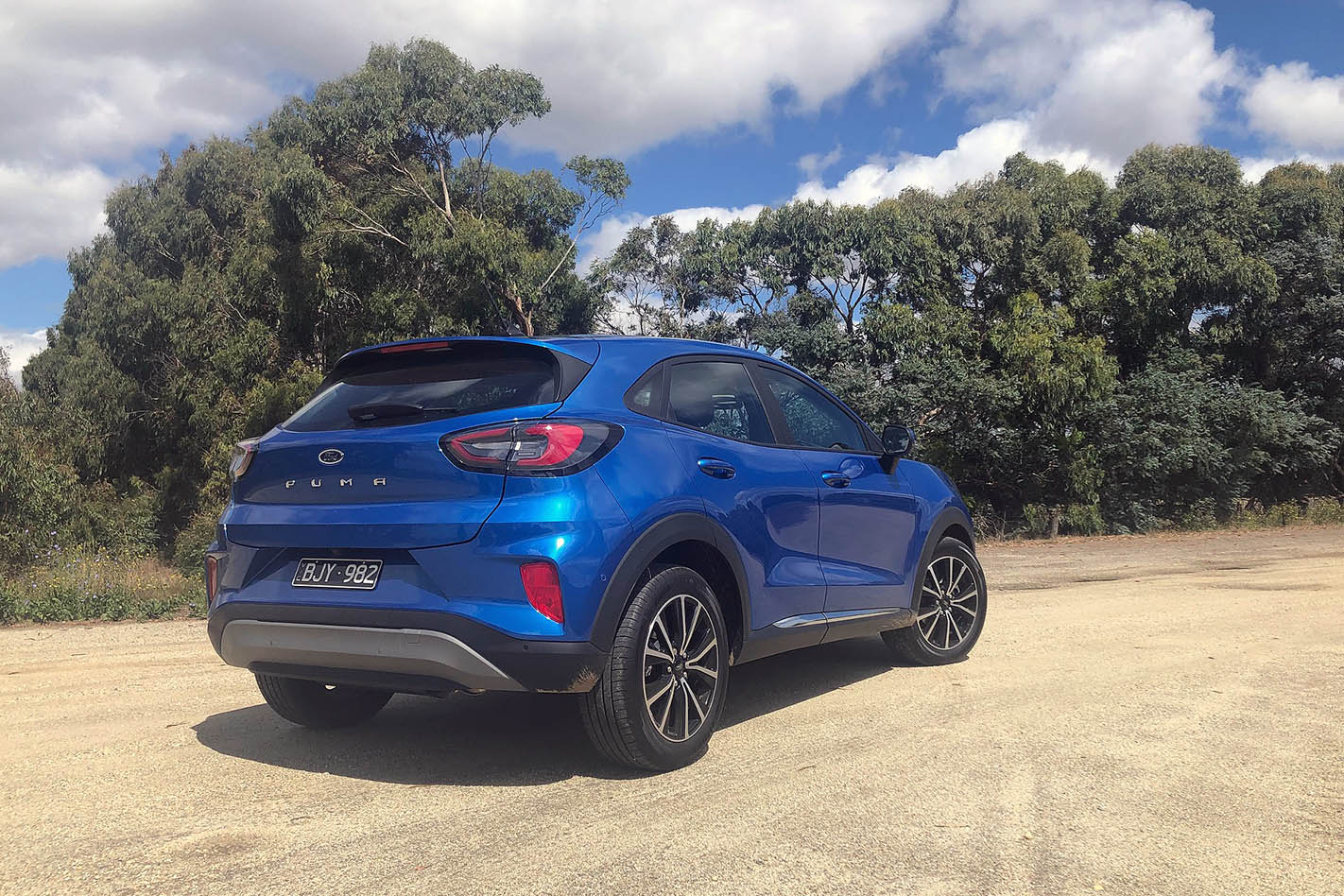
Retailing for $29,990 before on-roads, the Puma 1.0L Petrol is the most affordable of three variants that also include the sportier-looking Puma ST-Line and ST-Line V that are priced at $31,340 and $35,540 respectively.
What is the Ford Puma 1.0L Petrol like to live with?
Let’s start with those looks. The Puma isn’t exactly a pretty car like its bigger sibling the Escape, and its froggy front-end reminds me of a 1969 Austin 1800. Not that its gawky looks are a dealbreaker; if anything they provide a little charm.

The entry-level Puma is very well-equipped and comes with cloth seats, an 8.0-inch touchscreen with Ford’s Sync3 voice-activated infotainment, Apple CarPlay/Android Auto, rear-view camera, satellite navigation, digital radio, rear parking sensors, LED headlights, LED daytime running lights, puddle lamps, front foglights and cornering lamps, 17-inch alloy wheels, leather-wrapped steering wheel, Normal, Eco and Sport driving modes, climate control air-conditioning and push-button start.
It also comes with a sound list of active safety and driver assistance features including autonomous emergency braking (AEB) with pedestrian protection, auto high-beam headlights, rain-sensing windscreen wipers and lane-keeping assist.
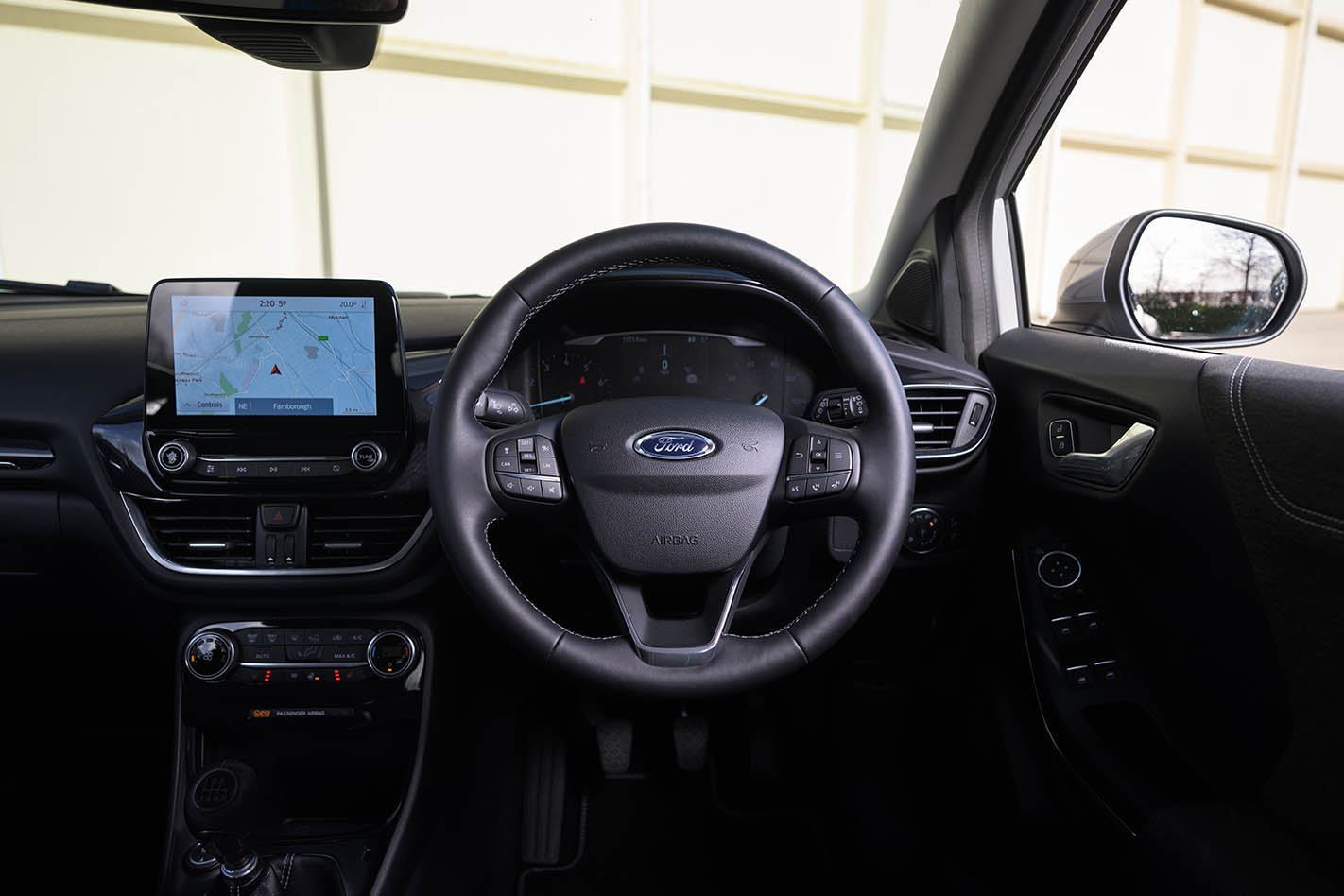
Our test car features some extra-cost options including the $1500 Park Pack that adds adaptive cruise control with Stop & Go, evasive steer assistance, automatic parking assistance and blind-spot monitoring. It also has prestige paint ($650) and a panorama sunroof ($2000) that toke the retail price to $32,340.
Being a light SUV based on a city hatch, there isn’t too much space in a Puma, but it is comfortable in the front seats at least.
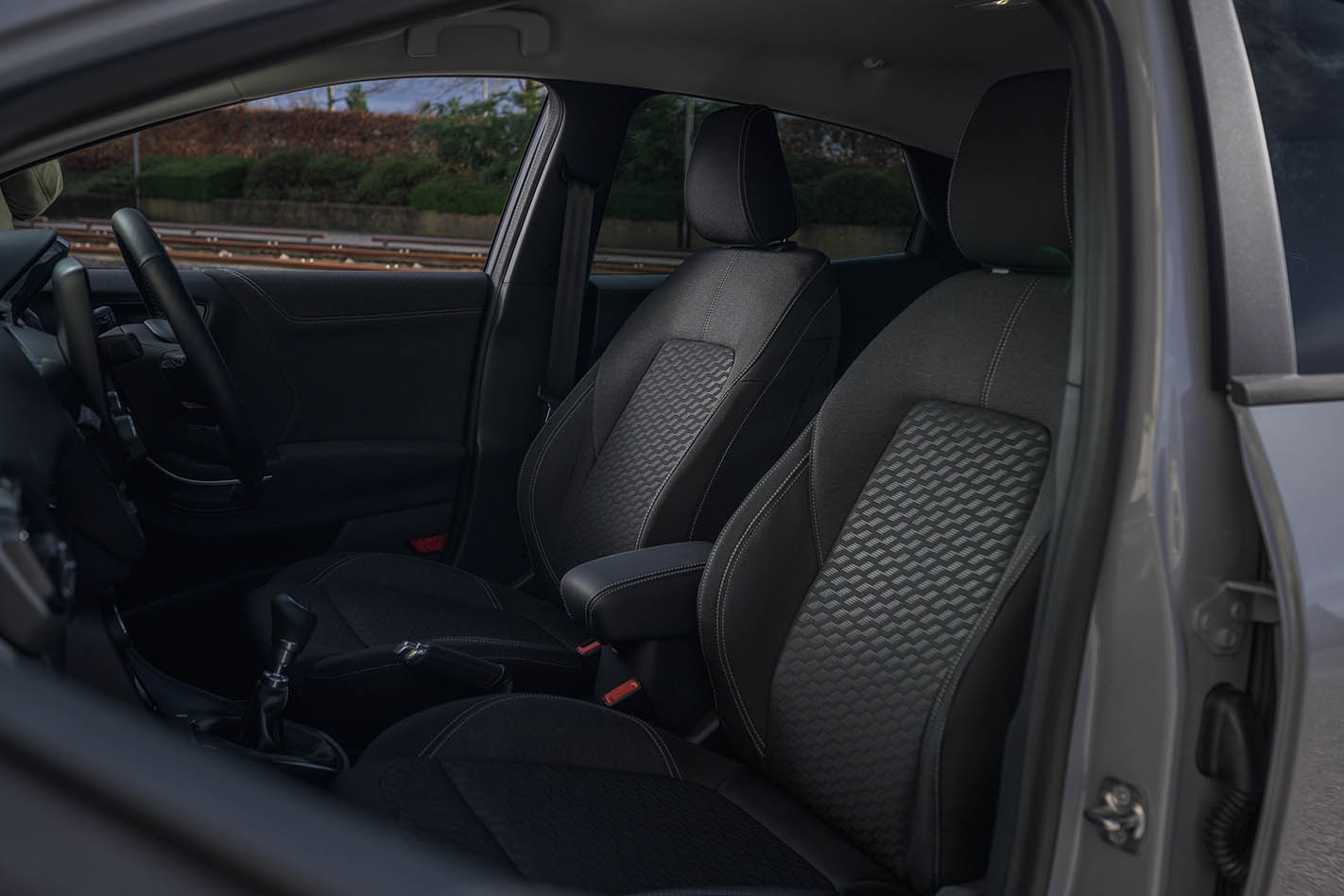
The cloth front seats are soft and supportive, and I managed to find a good driving position despite the basic four-way manual adjustments plus lumbar support.
Overall, the cabin is nicely trimmed and the attractive black denim-like seat trim replicated on the door cards.
The dashboard design is straight out of the Fiesta, similar also to the Focus and Escape, and includes an 8.0-inch floating touchscreen that’s easy to reach and control. The Puma also has the same analogue gauge cluster as its stablemates, which is a little dull and looks like it belongs in a van. The pricier ST-Line versions have a more attractive digital driver’s display.
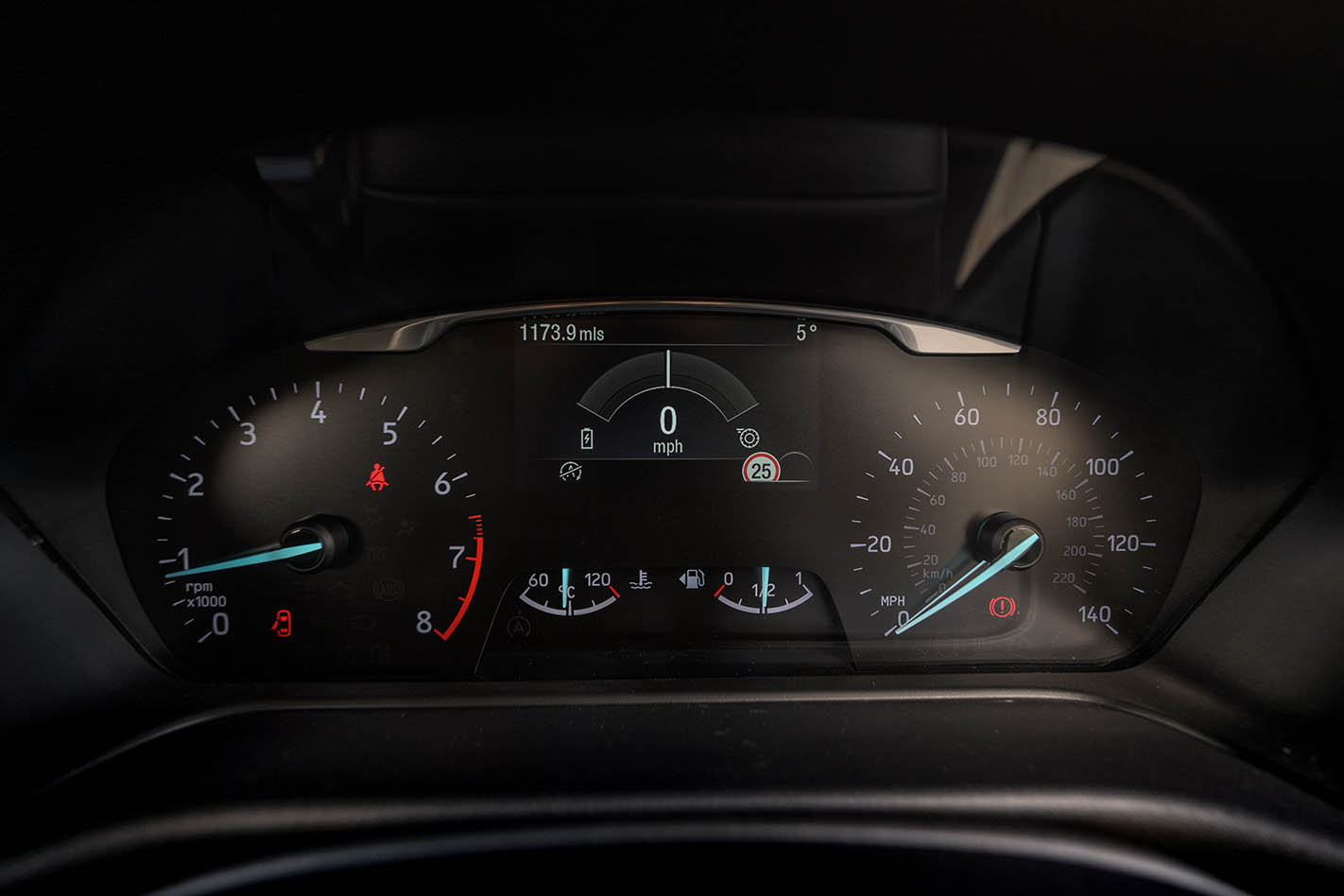
The centre console has the usual aperture in which to place and plug in your phone in front of the gear shifter, a couple of cup-holders and a small tub with a padded-armrest lid.
The Puma isn’t exactly a family car, so the rear seats are best suited for the occasional need to ferry more than one or two passengers. The rear bench will fit three kids but don’t even think of trying to wedge three adults in there.
Knee-room is pretty tight even behind an average-sized driver but there is sufficient room under the front seats to put your feet, so even taller passengers won’t have their chins resting on their knees.

The headroom in our test car was at a premium too, though it should be more generous without the optional sunroof.
There isn’t much back there for passengers apart from seats – there are map pockets behind the front seats and small door bins that will hold a cup but no USB ports, air-vents, or fold-down middle seat cushion to act as an armrest.
The Puma gains practicality points with 410 litres of boot space that is one of the biggest in its class. It includes a false floor under which there is a deep 80-litre removable wet tub with a drain hole. Below that, you’ll find a space-saver spare tyre.

One thing all passengers will enjoy is the quiet ride. The Puma engine purrs when you start it and driving at city speeds cabin noise is quieter than the Hyundai Kona Electric that gives off considerable tyre rumble.
The Puma is a relatively affordable vehicle to operate. Official combined fuel economy is a frugal 5.3L/100km and you will only need to trouble your local service department every 15,000km or 12 months, whichever comes first, with six-year service pricing set at a reasonable $299 for the first four check-ups, $320 for the 75,000km interval and $370 at 90,000km.
It is covered by a five-year, unlimited-kilometre warranty.
What is the Ford Puma 1.0L Petrol like to drive?
The Puma’s power comes from a punchy 92kW/170Nm 1.0-litre three-cylinder turbocharged petrol engine. Carried over from the last-of-the-line EcoSport, it feels considerably more dynamic in the Puma, which is 80kg lighter and has slipperier aerodynamics helped by an active grille shutter that reduces drag.
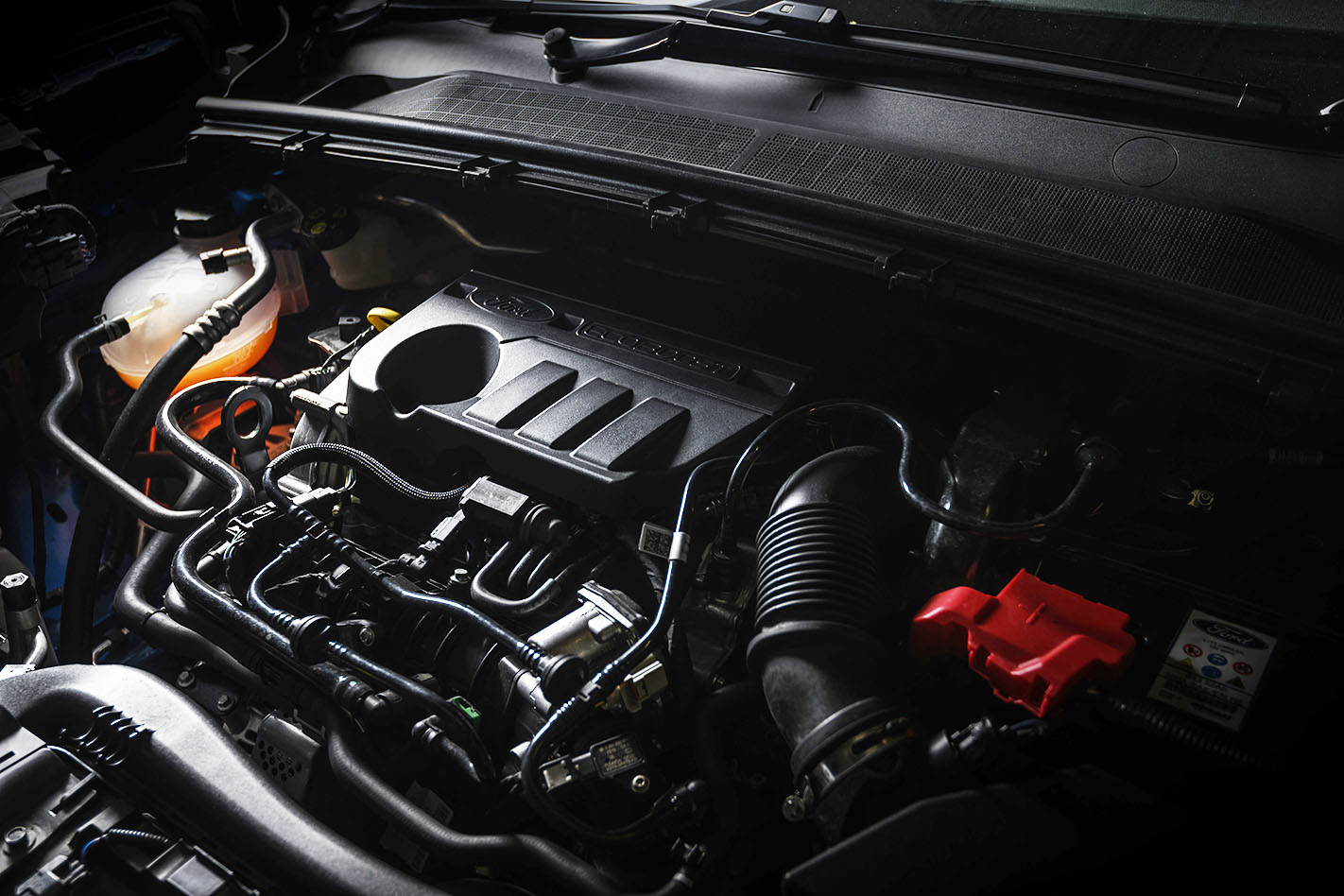
It’s coupled with a seven-speed dual-clutch transmission (DCT) that drives the front wheels. Like most little turbo/DCT powertrains it tends to exhibit a bit of lag when you put the foot down. But once you get past that barrier it’s a bit of a rocket with peak torque sticking around to 4000rpm while the rubber band is still winding up to max power.
There are five driving modes; Eco, Normal, Sport, Sand/Snow and Trail, with Sport letting you reach the higher revs with up shifting to take full advantage of the diminutive engine’s output.
Unlike the ST-Line versions, there are no paddle shifters, so you lose out on manual inputs but that doesn’t really take much away from the driver engagement the Puma offers – though the six-speed manual version available overseas would be a hoot!
The steering is precise and its taut underpinnings exhibit excellent body control so when you point the front wheels in one direction, the rear end quickly complies.

The relatively rudimentary suspension of MacPherson struts up front and rear torsion beam is a little firm so you feel the smaller bumps but it seems to come into its own at higher speeds, even on rough roads.
Taking the Puma out past Bacchus Marsh west of Melbourne on some very ordinary roads featuring a narrow strip of pockmarked bitumen, I was amazed at how it lapped up the neglected road surfaces.
It doesn’t exactly glide over them, but it absorbs them well with little secondary movement. At one point I winced as I spotted a considerably nasty pothole and was surprised by the lack of jarring.
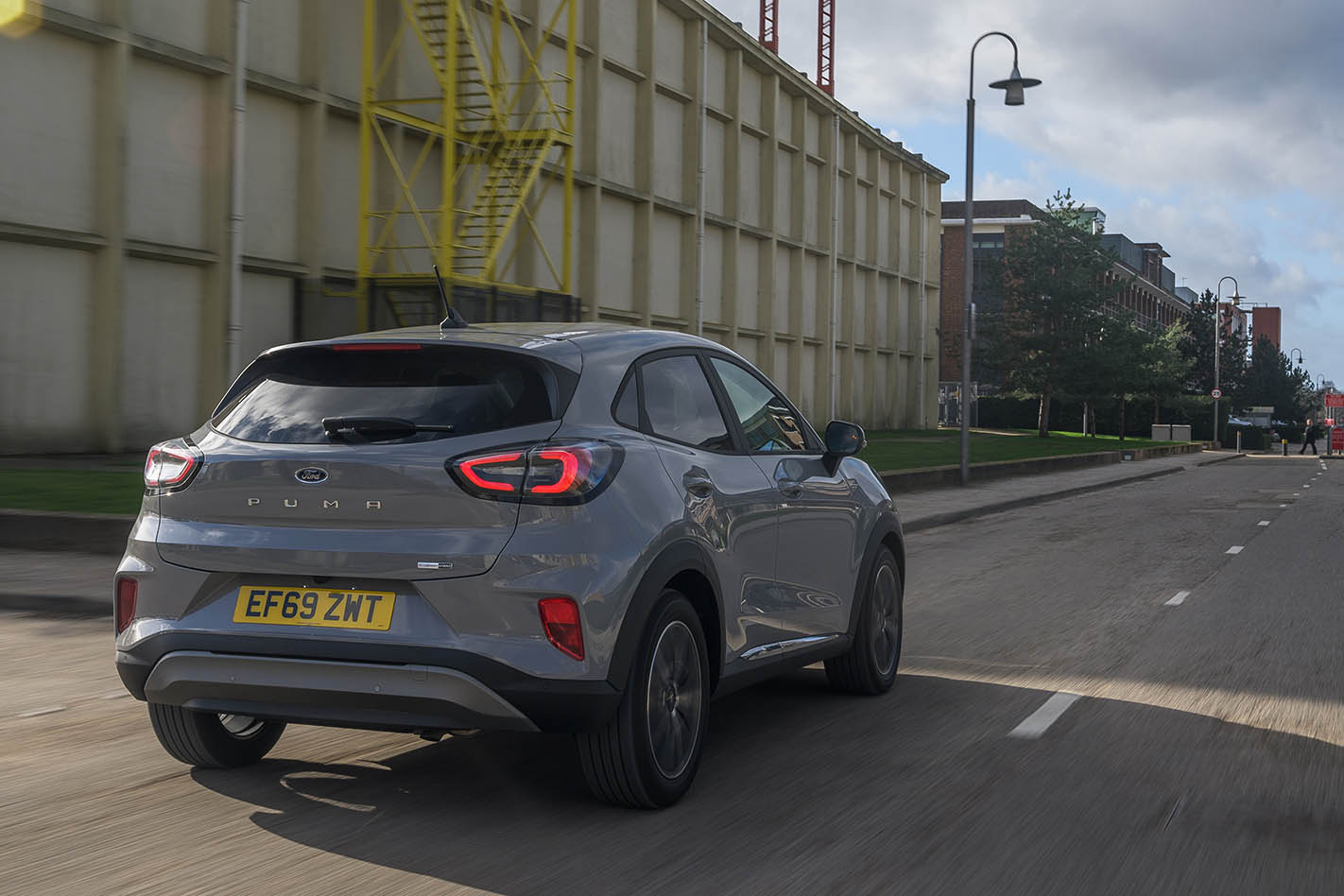
I hadn’t intended to test the Puma in these conditions, but this is where it delighted me most. It barrelled down country roads, including gravel, and there were times when I’d look down and the speedo and was amazed to see I was doing [redacted] km/h such is the ride composure. It feels like a mini grand tourer.
Needless to say, it’s also good fun and very able around town and parking is cinch; just don’t make the mistake of categorising it as a city car.
Speaking of parking, our test car had the auto-parking that came with the Park Pack. It isn’t really necessary in a car this size but I do like its simple operation. Once you find a spot you put it in neutral and hold the Auto Park button down and it shoots into your spot. All you have to do is apply the brakes.
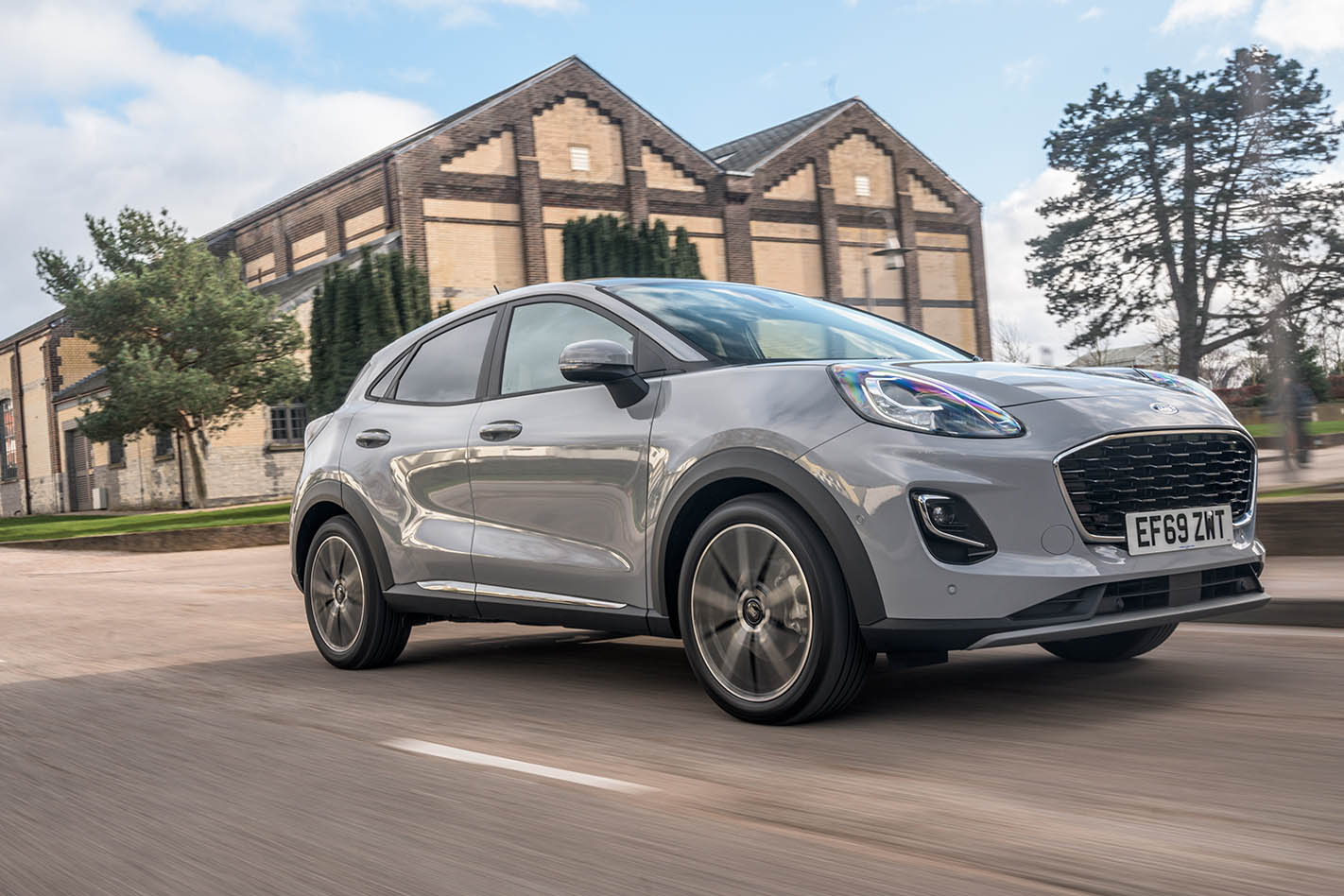
As I mentioned above, the Puma is a very quiet car. It whispers into life when you push the start button and when you drive off at low speed. When you put the foot down it gets a little vocal, but like most three-pot engines it has a throaty din that sounds quite good.
How safe is the Ford Puma 1.0L Petrol?
The Ford Puma was awarded a 5-Star ANCAP rating in September 2020 based on a Euro-ANCAP assessment that saw it achieve high marks across all categories.
It has six airbags, two front inflators and front and rear side curtains, seatbelt reminders, auto high-beam headlights rain-sensing windscreen wipers, and tyre pressure monitoring.
There are 2 x ISOFIX child seat anchor points in the rear seat plus three top-tether points.
Standard active safety and advanced driver assistance features including AEB with pedestrian protection, forward collision alert, lane-keeping assist, and traffic sign recognition.
Adaptive cruise control, evasive steer assist and blind-spot monitoring are also available but only if you specify the aforementioned optional Park Pack.
The Verdict
There are few bad cars these days which means that while most cars are able to satisfy it’s not too often that one will delight you when you least expect it. The Puma has done that for me, especially when driving it on rural roads.
The great thing is this happened in the base model and would have done so even if it didn’t have the optional Park Pack and sunroof.
Still, I reckon the Park Pack is good value but I’d rather leave out the sunroof option and pocket the $2000.

As far as light SUVs go this entry-level Puma ticks most boxes – it’s relatively affordable, stylish, practical and brings a fun factor that some of its rivals lack.
It loses a few marks because of the tight rear-seat space, but the Puma doesn’t pretend to be a family car. Like all other light SUVs, its target audience is young urban professionals though, though as we often see it’s likely to be popular with empty-nesters who want a small, fun and practical car with a slightly higher ride height.
All in all Ford Puma is a great little package that deserves more recognition than its sales figures suggest.
Score 8/10
PLUS Punchy engine, ride and handling, practicality, value MINUS Gawky looks, tight rear-seat space
Ford Puma 1.0L Petrol specifications
Body: 5-door, 5-seat SUV Drive: FWD Engine: 999cc 3-cyl, 12v turbo Power: 92kW @ 6000rpm Torque: 170Nm @ 1500-4500rpm 0-100km/h: 9.0sec (claimed) Fuel consumption: 5.3L/100km (combined) Weight: 1381kg Power/weight:72.8W/kg Transmission: 7-speed DCT Suspension: MacPherson strut/Torsion beam axle L/W/H: 4186/1805/1550mm Wheelbase: 2588mm Tracks: 1562/1567mm Brakes: Front ventilated discs / Rear discs Tyres: 215/55 R17 Wheels: 7Jx17 Price: From $29,990




